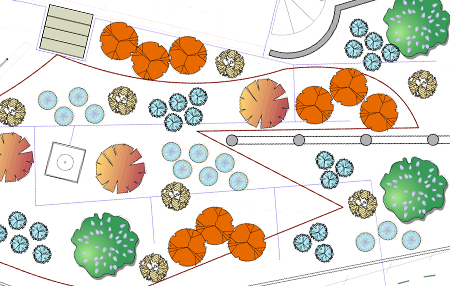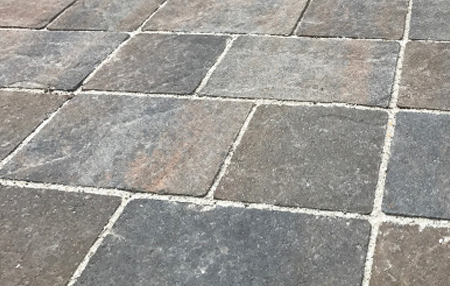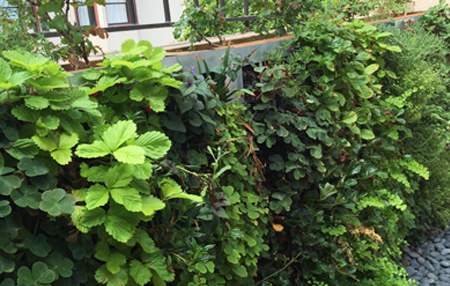Design, Build, Maintain
The strength of creative vision to design your ideal garden is only the first step in our partnership. Next, we commit to the concept and build it with the most durable, highest quality materials. Gratified clients engage Madroño for ongoing maintenance, making it a long-term relationship.
We take pride in our services, and offer an unconditional guarantee for the protection and assurance of our clients. Learn more about our warranties.

Modern Landscape Design
We bring a new vision to every project, seeking novel design answers to old garden problems.
Our projects break free from cliché with vertical landscapes and roof gardens, stormwater capture and reuse programs, architectural fences and decks, low-voltage LED lighting, native habitat to attract butterflies and birds, high-density urban edibles, low-water sedges and meadowgrasses as alternative lawns, and other good ideas from our drafting table.
Our aim is always to raise your outdoor space to elevated levels of inspiration, enjoyment, and pride.

QUALITY CONSTRUCTION
We use quality materials, superior craftsmanship, and locally appropriate native plants to build beautiful and sustainable landscapes with Bay Area identity.
Our landscapes weave native plants and fine materials through a modern lens, putting color, texture, and aroma into the built landscape.

GARDEN MAINTENANCE SERVICES
We approach the job of ongoing care with a designer’s eye, seeking to nurture the healthy development of both the individual plant and the overall quality and stature of the larger landscape.
We’d love to develop a long-term relationship with your garden. Let’s get acquainted.
#BUILTBYMadrono
CUSTOMER REVIEWS
![]()
“We had our entire front and back yards completely re-landscaped. Madroño did an excellent and precise job. The crew was always quality-conscious and easy to work with. They make great plant recommendations and provide ongoing care. I definitely recommend Madroño for any landscaping project.”
– Randy M., San Francisco
Make A Connection
We’d love to strike up a relationship with you and your garden. Let’s get acquainted.

About Us
The strength of creative vision to imagine your ideal garden is only the first step in our partnership. Next, we commit to the concept and build it with the most durable, highest quality materials. Gratified clients engage Madroño for ongoing maintenance, making it a long-term relationship.
Our Services
Landscape Design
Construction & Build
Garden Maintenance
Stonework
Water Features
Landscape Lighting
Fences
Contact Us
Mailing Address:
58 West Portal Ave
San Francisco, CA 94127












